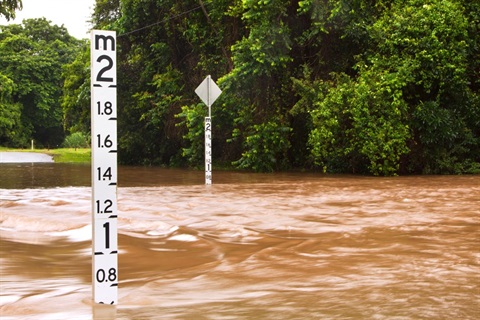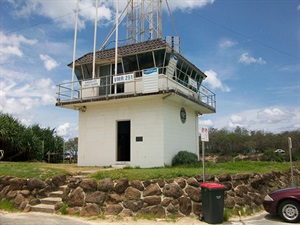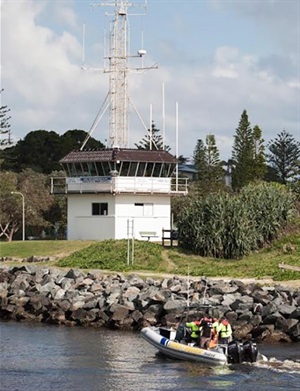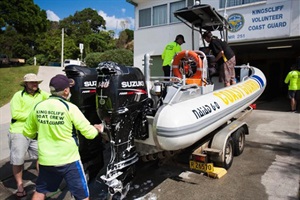How emergencies are managed

Emergency management in the Tweed is a joint effort between government and non-government agencies, volunteers and Council.
What is an emergency?
An emergency is an event that:
- endangers, or threatens to endanger the safety or health of people or animals
- destroys or damages, or threatens to destroy or damage, property, in such a manner as requires a significant and coordinated response.
Emergency life cycle
Emergencies have 4 stages:
- prevention
- preparedness
- response
- recovery
Understanding this cycle helps us prepare for emergency events, respond safely and recover quickly.
At each stage there are different things to know, different actions to take and different ways we connect with people. These stages can change rapidly and often overlap.
Tweed Byron Local Emergency Management Plan
 The Tweed Byron Local Emergency Management Plan(PDF, 2MB) (EMPLAN) is the main document guiding emergency preparedness, response and recovery arrangements for the Tweed Local Emergency Management Area (the entire Tweed Local Government Area).
The Tweed Byron Local Emergency Management Plan(PDF, 2MB) (EMPLAN) is the main document guiding emergency preparedness, response and recovery arrangements for the Tweed Local Emergency Management Area (the entire Tweed Local Government Area).
The plan outlines responsibilities and functions assigned to each agency to ensure a coordinated response during emergency events.
Tweed Byron Local Emergency Management Committee
Key stakeholders involved in emergency management activity form the Tweed Byron Local Emergency Management Committee. The committee was established under the State Emergency and Rescue Management Act 1989 to:
'develop, maintain, coordinate and review comprehensive multi-agency emergency management arrangements within the Tweed Shire and to provide support to Combat Agencies and other Authorities and Organisations with emergency management roles which will assist in building a safer and more resilient community.'
The committee is responsible for and guided by the EMPLAN and includes:
- senior representative from both Councils
- senior representative of each emergency service operating in each region
- representatives of organisations providing services in functional areas
- the Local Emergency Operations Controller.
Council provides executive support facilities for both the committee and the Local Emergency Operations Controller for the Tweed Byron LEMC.
Who is responsible?
The agencies involved in emergency management are responsible for different risks. Responsibilities are documented in the Tweed Byron EMPLAN and each agency has its own planning document to support the EMPLAN.
More information
For information about emergency management in the Tweed contact Council's Local Emergency Management Officer on 02 6670 2567.
Emergency management history in the Tweed
History of the Australian Coastguards Kingscliff Flotilla Unit

The Australian Volunteer Coast Guard Association Inc was formed in 1961, a voluntary civilian organisation comprising men and women. Coast Guard is a registered charity and a non-profit organisation and all members are dedicated professional volunteers who freely volunteer their spare time to provide this service.
Its main role is to provide marine safety for small vessels around Australia's vast coastline and inland waters. Each year Coast Guard volunteers assist thousands of people, from assisting sinking vessels, vessels with flat batteries and other mechanical problems, vessels that have run aground and often towing these disabled vessels back to safe harbour.
Coast Guard is also often called upon to perform Medivac responses at hard-to-reach islands and beaches and to assist with search and rescue for people who might be lost or missing at sea or in other waterways.

Kingscliff Radio Watch was founded by the late George Bonnett, a keen fisherman who had a radio background. He called a public meeting at the Kingscliff hotel and it started from there.
Then the NF19 Kingscliff Unit began servicing the boating community in November 1982. It was established as a Unit under The Australian Volunteer Coast Guards on 6 February 1985 and received its Charter on 14 July 1989. Based in Kingscliff, it served an area from Tweed Heads to Pottsville. The first Commander was N. Brooks and F. Anderson was Vice Commander.
The NF Kingscliff Unit operated from a Coast Guard Radio Tower at Faulks Park, in Marine Parade. The tower was built with the help of many founding members of the Unit and was a proud testament to the dedication and commitment of the volunteers supporting their community.
In 2007, the members built a training room at Kingscliff's Ed Parker Rotary Park, for the flotilla's meetings and training with members and the public.
The Coast Guard Unit received regular funding from Tweed Shire Council, complemented by financial assistance from the community in recognition of the volunteers' hard work and dedication. This funding enabled the flotilla to operate five rescue vessels.
While the flotilla's primary role was search and rescue at sea, the unit was enthusiastically involved in a wide range of community activities. It provided radio communications at a local horse riding endurance event, assisted the SES and other services in flood relief, and helped the local fire brigades with radio operations and communications during bushfires.
 The training rooms were also utilised by St John Ambulance, CWA ladies and other groups. Less known were the events at the radio watch tower, which served as emergency shelter when beach weddings became weather affected.
The training rooms were also utilised by St John Ambulance, CWA ladies and other groups. Less known were the events at the radio watch tower, which served as emergency shelter when beach weddings became weather affected.
A number of the volunteers were ex-service veterans or had family members who served, so the unit always participated in Anzac Day Services.
The Kingscliff flotilla was the last remaining Unit in NSW, although Coast Guard Units are still active around the coastline in other States. With more than 33 years' support to the Kingscliff boating community, the Unit's closure was a sad day for the community and the volunteers.
A commemoration to the years of dedicated service by the volunteers was held at the radio watch tower, where there were mixed emotions about the closure. Many community members questioned who would fulfil the services previously undertaken by the unit and how the flotilla's demise would impact upon the small boating community along this busy part of the NSW coastline.
Changes to maritime management in NSW led to the establishment of Marine Rescue NSW (MRNSW) in 2011, to look after maritime rescue in the State. Marine Rescue NSW brought together members of other Australian Volunteer Coast Guard Units in NSW, the Royal Volunteer Coastal Patrol and Volunteer Rescue Association's maritime fleet into a single integrated service.

Kingscliff Coast Guard Unit voted against joining Marine Rescue NSW because they felt it was counter to the 'spirit' of volunteer service, choosing instead to remain part of Coast Guards as the last remaining Flotilla Unit in NSW. Once it was confirmed NF19 Unit would not join MRNSW, the Unit's accreditations and funding sources were removed. The Unit's operations were no longer feasible and it ceased operations on 30 November 2014.
The radio tower and training rooms are being considered for future use by community groups, including Marine Rescue Point Danger.
Tweed Shire Council thanks the Unit's members for their dedication to serve the community for more than three decades. Their work to help the community will never be forgotten.